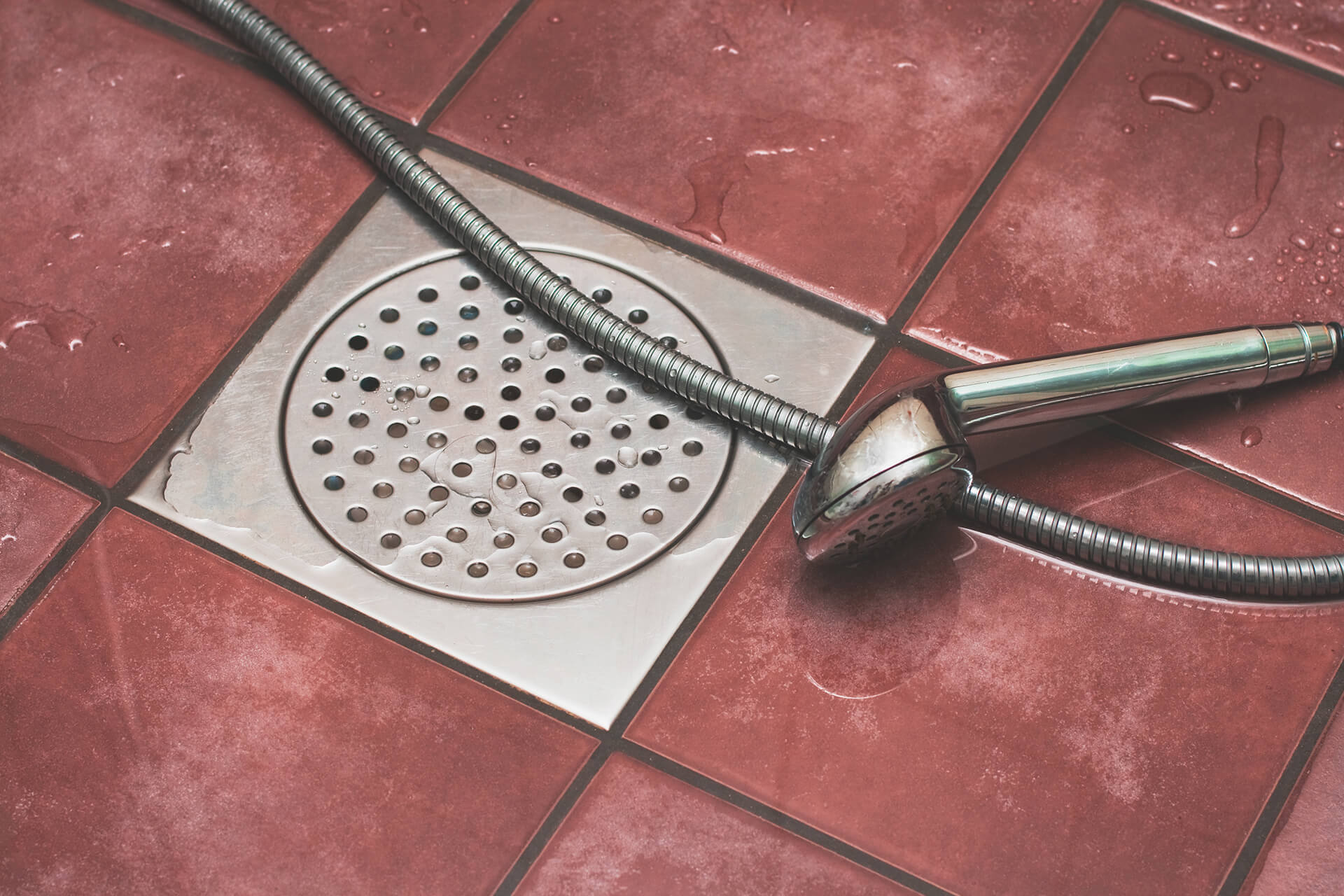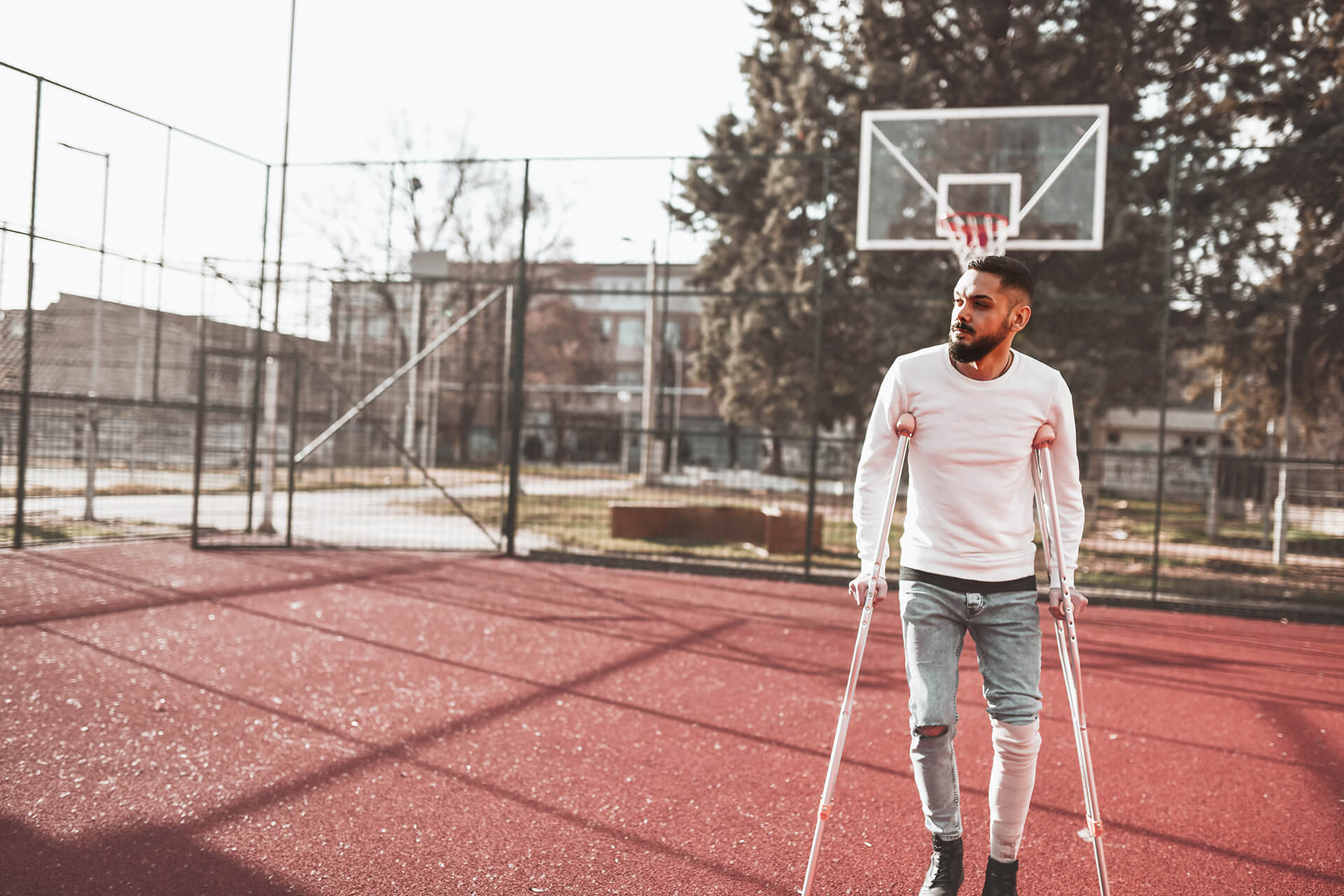What Are the Different Types of Alopecia?
Alopecia is simply a medical umbrella term for any type of hair loss. But there are many different types of alopecia.
You’ve got androgenetic alopecia hair loss, which is linked to genetics. You might be more familiar with its nicknames male pattern baldness and female pattern hair loss.
Then there’s alopecia areata (an autoimmune disorder) and traction alopecia (commonly caused by tight hairdos). There’s telogen effluvium, caused by severe stress, and anagen effluvium, caused by treatments like chemotherapy. And there’s a host of other more rare types of alopecia.
Let’s dive into the world of hair loss, looking at all types of alopecia, their symptoms, and possible treatment options. Ready?
Androgenetic Alopecia
This is the main cause of hair loss for both men and women. Also called male and female pattern baldness, androgenetic alopecia is a common hereditary condition that affects about 80% of men and almost 50% of women.
The Causes of Androgenetic Alopecia
The causes of androgenetic alopecia (or androgenic alopecia) are genetics and aging. Specifically, it happens when a hormone called dihydrotestosterone shrinks sensitive hair follicles, limiting their ability to grow hair. Without treatment, it usually gets worse over time.
The Symptoms of Androgenetic Alopecia Hair Loss
| For men (male pattern baldness) | For women (female pattern hair loss) |
|---|---|
| Thinning hair on your crown | Overall thinning hair |
| Receding hairline | A widening part |
| Balding | Reduced hair volume |
Androgenetic Alopecia Treatment
There’s no cure for androgenetic alopecia hair loss. But you can stop it from getting worse — and even reverse the hair loss you’ve experienced.
Topical treatments and oral hair loss medications are available, including but not limited to minoxidil, finasteride, dutasteride, and spironolactone. Many people also try low-level laser therapy (LLLT), designed to stimulate blood flow to the scalp and promote hair growth.
The Hairy Pill® is also an androgenetic alopecia treatment! It’s a personalised hair growth solution to treat men’s hair loss and women’s hair loss, made specifically for you and delivered directly to your door.
The Hairy Pill® is just one pill, taken daily, containing everything your body needs to stop hair loss in its tracks and promote regrowth.
Discover if The Hairy Pill® is right for you.
Take our short hair health quiz and we will work out if The Hairy Pill® can help you and your hair.
Take the quizAlopecia Areata
Alopecia areata is an autoimmune disorder that causes your hair to fall out in round or oval patches — usually on the scalp but sometimes anywhere on your body, including eyebrows and eyelashes.
It can affect all ages and genders, with about 2% of the population experiencing the condition in their lifetime.
However, alopecia areata is most commonly found in teenagers and young adults, with a 2022 review reporting that 40% of patients experience their first symptoms by 20 years of age and 88% by 40 years of age.
Alopecia Areata Causes
Alopecia areata occurs when your immune system mistakenly attacks and damages your hair follicles. It may have a genetic risk factor but more research needs to be done to fully understand alopecia areata causes.
Alopecia Areata Symptoms
There are several different types of alopecia areata, generally characterised by the location and extent of hair loss. Each condition presents slightly differently, so let’s look at each in turn to understand the different alopecia areata symptoms.
| Types of Alopecia Areata | |
|---|---|
| Type | Symptoms |
| Persistent patchy alopecia areata | Small round or oval bald patches on the scalp |
| Alopecia totalis | Complete scalp baldness |
| Alopecia universalis | Complete hair loss over the entire body |
| Diffuse alopecia areata | Thinning hair across the scalp |
| Alopecia barbae | Hair loss and balding in the beard area |
| Alopecia ophiasis | Hair loss on the back and sides of the head |
Persistent patchy alopecia areata
This is the most common type of alopecia areata, resulting in patchy bald spots on the scalp (generally the size of 20-cent or 50-cent coins).
Alopecia totalis
This is when you lose all the hair on your head, resulting in complete baldness up top. Alopecia totalis affects both genders and can happen all of a sudden or slowly.
Alopecia universalis
Alopecia universalis is a very rare, very advanced form of alopecia areata that results in total hair loss over the entire body, including eyebrows and eyelashes. It affects both genders, usually later in life.
Diffuse alopecia areata
Also known as alopecia areata incognita, diffuse alopecia areata is another very rare type of alopecia areata. Symptoms include hair thinning across the scalp similar to the symptoms of telogen effluvium and female pattern hair loss. This makes it difficult to diagnose.
Alopecia barbae
Alopecia barbae causes the beard to fall out in small coin-sized patches (sometimes across the entire beard zone). Your beard may regrow with treatment, which is usually a combination of minoxidil and corticosteroids.
Alopecia ophiasis
Another rare type of AA that mainly affects younger people, alopecia ophiasis impacts the back and sides of the head, without affecting the hair on the top and front of the scalp.
Alopecia Areata Treatment
The good news? This type of alopecia often results in a period of hair loss followed by a period of regrowth (though relapses can occur).
It’s trickier to treat alopecia areata once it reaches the alopecia totalis stage, at which point it’s unlikely to resolve on its own. Fortunately, there are still intervention treatments. Common alopecia areata treatments include oral immunosuppressants, topical corticosteroids, and corticosteroid injections.
Telogen Effluvium
elogen effluvium is a type of hair loss with a sudden onset and alarming amounts of shedding, typically triggered by an event that puts extreme stress on the body. It’s the second most common form of hair loss after androgenetic alopecia.
In good news, it’s usually temporary, lasting on average about 6 months before your hair growth cycle restores balance. It also won’t lead to baldness.
Learn more about telogen effluvium and how it’s treated.
The Causes of Telogen Effluvium
Telogen effluvium happens when your body is under stress and sends more of your hair than usual into the telogen (shedding) phase of the hair growth cycle. It also prolongs this phase.
During a stressful event, your body diverts energy from hair production mode to protect vital organs and prioritise recovery. In essence, the stress ‘shocks’ the hair follicles into hibernation.
Telogen effluvium is rarely caused by one trigger alone but common causes include emotional stress (such as the death of a loved one or a divorce), childbirth, severe illness, surgical trauma, or medication.
The Symptoms of Telogen Effluvium
Telogen effluvium is characterised by diffuse thinning across the scalp, which begins roughly three months after the stress trigger. Women are slightly more affected by telogen effluvium than men.
Treating Telogen Effluvium
In 95% of cases, telogen effluvium is temporary and resolves on its own within a few months. But if it doesn’t, it becomes chronic telogen effluvium.
Anagen Effluvium
Anagen effluvium is a type of sudden hair loss that causes total (or near total) balding. It’s commonly caused by cancer treatments like chemotherapy and radiation but it’s usually reversed once treatment has stopped.
Learn more about anagen effluvium and how it’s treated.
The Causes of Anagen Effluvium
Anagen effluvium occurs when a trigger such as a toxic agent or inflammation disrupts the metabolic activity of the hair follicle, making hair prone to breakage and fractures.
The main cause of anagen effluvium is chemotherapy but other triggers include an autoimmune disease, radiation therapy, an infection, a toxic agent (such as poison), or other severe medications.
The Symptoms of Anagen Effluvium
Anagen effluvium is characterised by sudden hair loss, with up to 90% of your hair falling out, usually within 14 days of the trigger event.
It may result in a completely or partially bald scalp or even hair loss from your eyebrows, eyelashes, and body hair. There’s no discomfort, itching, or pain.
Treating Anagen Effluvium
Experiencing anagen effluvium can be shocking but because your follicles aren’t permanently damaged, your hair usually regrows when you get rid of the trigger (such as stopping chemo) — although your hair colour or texture may change.
How you treat anagen effluvium depends on the underlying cause. If chemo or radiation therapy is the cause, your hair loss is temporary and should grow back within 3–6 months of completing treatment.
Scalp cooling therapy is a preventative hair loss treatment. It can restrict the blood vessels on the scalp during treatment to limit the flow of blood to the scalp and reduce the amount of chemo medication reaching the follicles.
Ready to start your hair growth journey?
- Free express shipping
- Unlimited doctor consultations
- Simple once a day treatment
Traction Alopecia
Traction alopecia is a type of hair loss caused by too much stress and tension on the hair follicles. It normally happens when your hair is pulled back so tightly and for so long that it yanks out the hair at the roots and injures the hair follicles.
If left untreated, traction alopecia can damage your hair follicles for good, leading to permanent hair loss.
The Causes of Traction Alopecia
Hairstyles that can cause traction alopecia include:
- Snatched or tight ponytails
- Dreadlocks
- Hair extensions
- Weaves
- Cornrows
- Braids
Traction Alopecia Symptoms
- A receding hairline
- Patchy hair loss around the temples
Traction Alopecia Treatment
An easy way to treat traction alopecia is to let your hair down — literally! Switching up the hairstyles to give your follicles a little time to heal can go a long way to growing back your hair.
Common traction alopecia treatments include topical applications, such as antibiotics and corticosteroids, to soothe scalp tenderness and inflammation.
It’s always better to catch traction alopecia early — leave it too late and the damage could be permanent.
Cicatricial Alopecia (Scarring Alopecia)
This rare type of alopecia is caused by inflammation that damages hair follicles on the scalp and replaces them with scar tissue beneath the surface of the skin. The scarring makes it impossible to reverse the hair loss.
The Causes of Cicatricial Alopecia
We’re not entirely sure why cicatricial alopecia occurs but it may have something to do with skin damage caused by a burn or severe infection.
The Symptoms of Cicatricial Alopecia
Symptoms of cicatricial alopecia are hard to spot because the scars are hidden beneath the skin. Patches of hair loss are the most obvious symptom but people with scarring alopecia can also experience itching, pain, and a heating sensation.
Treating Cicatricial Alopecia
Hair loss treatments are only effective if the condition is caught early. Once scarring occurs, hair loss is permanent. Patients may also choose to have hair transplant surgery to reduce bald spots.
Postpartum Alopecia (Postpartum Telogen Effluvium)
This type of hair loss becomes noticeable about 2–3 months after giving birth and is caused by the sudden drop in oestrogen following childbirth.
Women usually experience more hair growth during pregnancy, so postpartum alopecia is not actually hair loss but shedding — you just notice more hair shedding than usual because you had more hair during your pregnancy.
A bit of shedding is perfectly normal after pregnancy but some women can experience enough hair loss for it to be distressing. Your hair loss is usually temporary and is reversed after a few months when your hormone levels return to normal.
Lichen Planopilaris
Lichen planopilaris is a rare autoimmune condition more often experienced by women — particularly young women — than men.
This inflammatory disorder causes scaly skin, redness, and smooth patches on the scalp. Because it scars the skin, it destroys the hair follicles, meaning that any hair loss is permanent.
While experts aren’t entirely sure what causes lichen planopilaris, it is believed to be triggered by viruses, allergens, and anti-malarial and beta-blocker medications.
To alleviate symptoms, doctors and dermatologists generally recommend cortisone lotions, retinoids, and calcineurin inhibitors as topical treatments. They may also prescribe oral treatments, including hydroxychloroquine, tetracyclines, or other immunosuppressants.
Frontal Fibrosing Alopecia (FFA)
This is a particular type of lichen planopilaris hair loss that occurs in a slow, progressive pattern across the hairline and temples, above the forehead. It may also affect the eyebrows and eyelashes.
In its first description in 1994, the condition was believed to exclusively affect women but since 2002, men have also been diagnosed with it.
According to a 2021 review in the Journal of Clinical Medicine, the mean age of onset of FFA ranges from 56 to 63 years.
As with other types of lichen planopilaris, experts aren’t sure what causes the condition but we do know that it destroys the hair follicles so the hair loss is permanent.
Because of the permanent damage the condition can inflict, the only way to prevent permanent hair loss from frontal fibrosing alopecia is to catch it early. The most effective treatment appears to be 5-alpha reductase inhibitors like finasteride.
Central Centrifugal Cicatricial Alopecia (CCCA)
This tongue-twister of a condition is a type of scarring alopecia that can damage hair follicles, leading to permanent hair loss. It typically begins on the crown and spreads across the top of the head.
It almost exclusively affects Black women over 30 years of age and is believed to impact up to 15% of black women.
According to a 2020 review in JAMA Dermatology, a common gene variant has been found in about 25% of patients with CCCA but the exact cause of CCCA is unclear.
Possible causes include practices such as hair straightening or wearing tight hairstyles, autoimmune disorders, or bacterial or fungal infections.
The Most Common Alopecia Treatments
Now that you’re more aware of what your alopecia may be and what’s causing it, we can offer some good news.
Whatever type of alopecia you have, there are ways to help stop hair loss in its tracks and try and prevent the alopecia from coming back.
But a word of caution: there’s no such thing as a ‘best cure for alopecia’. And there’s certainly no miracle overnight cure.
The best alopecia disease treatments address the cause of the problem. They do their best work by bringing balance back to the hair growth cycle, which is naturally slow, meaning that it can take time to see the results.
The best approach is to consult a doctor or dermatologist who can diagnose the underlying cause of your hair loss and provide recommendations on the best treatment plan.
Natural alopecia treatment
When your hair loss is temporary, sometimes the best treatment is patience. It takes time to rebalance the hair growth cycle.
But if you’d like to give your hair follicles their best chance at a full recovery, there are a few natural things you can do to nourish your roots.
You can begin by eating a balanced, healthy diet full of the best foods for healthy hair (foods like fatty fish, red meat, eggs, nuts, and seeds). Add to that some of the best herbs for the hair.
If you have a nutritional deficiency, you may benefit from taking hair growth supplements or vitamins for hair growth.
Meanwhile, it’s always a good idea to keep the stress to a minimum. Getting a good night’s sleep, exercising plenty, and practising meditation may help keep stress at bay.
Finally, don’t forget to give your hair some R&R by literally letting your hair down every once in a while and easing up on heavy brushing and styling.
Learn more about lifestyle changes for healthy hair growth.
Medical treatments for alopecia
The best medicine for alopecia depends on the type of alopecia you have, along with a variety of other factors.
If you’re concerned about hair loss, be sure to consult a general practitioner or dermatologist who can diagnose and prescribe the best medical treatment for alopecia based on your needs.
| Alopecia type | Treatments |
|---|---|
| Androgenetic alopecia | Finasteride and minoxidil |
| Alopecia areata | Oral immunosuppressants, topical corticosteroids, and corticosteroid injections. |
| Telogen effluvium | Finasteride and minoxidil may be used to treat chronic telogen effluvium |
| Anagen effluvium | Scalp cooling therapy may be used to prevent hair loss. |
| Traction alopecia | Topical antibiotics and corticosteroids may be used to reduce symptoms. |
| Cicatricial (scarring) alopecia | Depends on type of cicatricial alopecia. Common treatments include anti-inflammatory medication, corticosteroid injections, or antibiotics. |
| Postpartum alopecia | Hair vitamins for alopecia (minoxidil not generally recommended while breastfeeding) |
| Lichen planopilaris (and frontal fibrosing alopecia) | Topical treatments such as cortisone lotions, retinoids, and calcineurin inhibitors or oral treatments such as hydroxychloroquine, tetracyclines, or other immunosuppressants. |
| Central centrifugal cicatricial alopecia | Topical treatments such as steroids, calcineurin inhibitors, tacrolimus ointment, or pimecrolimus cream or oral medications such as tetracyclines, hydroxychloroquine, or ciclosporin. |
If you’d like to promote the hair regrowth process, The Hairy Pill® can help restore balance to your hair growth cycle, with personalised treatment available to help with both male alopecia and female alopecia.
Procedures for Alopecia
More severe hair loss may require a more intensive procedure to coax your hair follicles back to life — or to replace damaged follicles.
Platelet-rich plasma (PRP) therapy involves injecting concentrated platelets directly into the scalp. This process aims to boost blood flow and support healthier hair follicles. Early research indicates it may help promote hair regrowth, though results can vary.
Low-level laser therapy (LLLT) uses red light waves to target inflammation and encourage tissue repair. While it shows potential in addressing hair loss, more research is needed to confirm its long-term benefits.
For more advanced cases, a hair transplant might be considered as a last resort. This surgical procedure relocates healthy follicles from one part of the scalp to areas with significant hair loss. It can take up to 9 months for the transplanted hair to establish itself and fill in.
Investigate Alopecia Treatments Today
The Hairy Pill® alopecia treatment plan includes true personalisation in just one daily treatment.
With 650+ ingredient and dose combinations, along with ongoing doctor consultations to track progress and adjust the treatment as needed, you can be sure your body is getting only what it needs to treat alopecia and regrow hair.
Ready to treat your hair loss and start your journey to fuller, thicker coverage? Join the 41,000+ people who have used The Hairy Pill®. Get started now.


















